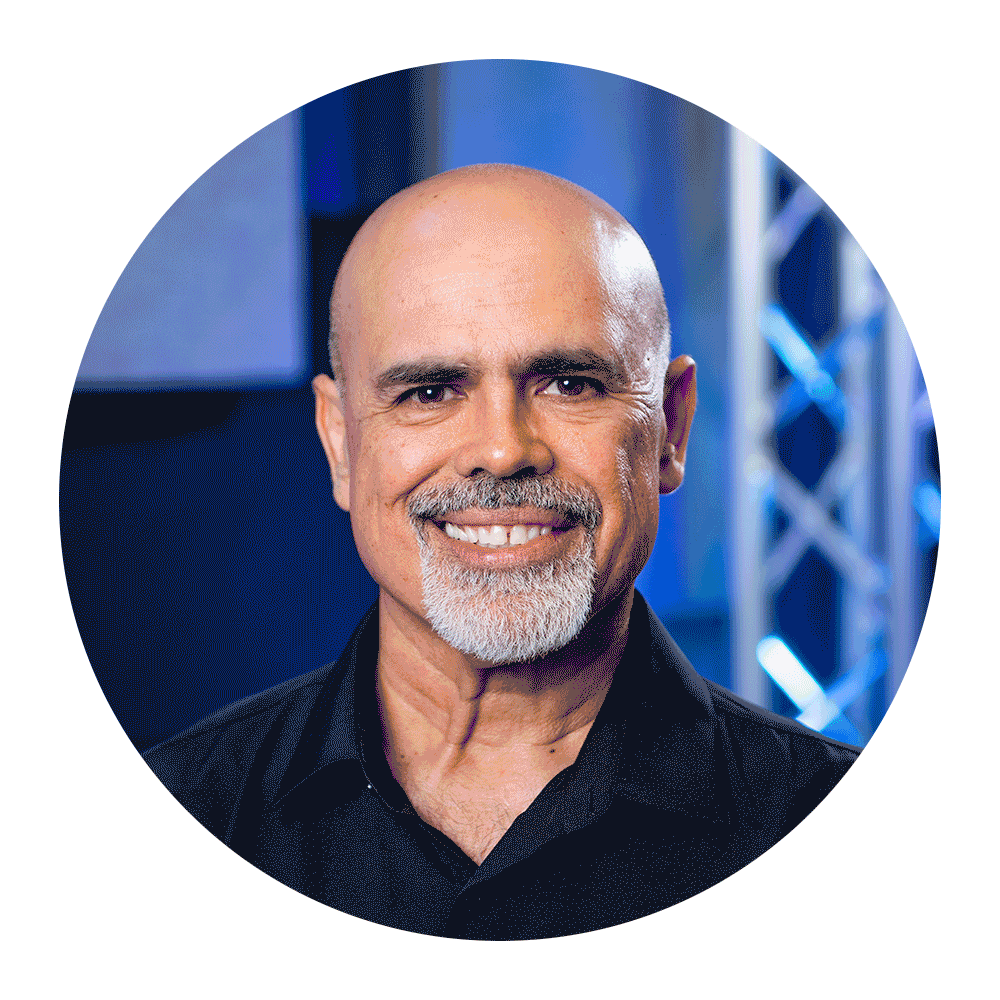Comparing Assistive Listening Systems for Your Installation
Posted by Laura Strommen - SoundPro on May 28th 2024
Estimated Reading Time: 9 Minutes
Assistive Listening Systems can be a great addition to a public space that wants to ensure they welcome individuals with mild to severe hearing loss—whether those individuals have personal assistive listening devices (ALDs) or not. Ideal for venues including houses of worship, entertainment venues, educational or government facilities, and hospitality and transportation spaces, Assistive Listening Systems (ALS) crafts a welcoming space where everyone can hear—and be heard. This article will compare the different types of ALS available, the pros and cons of each type of setup, as well as suggest some of the gear available from SoundPro.
WHAT IS THE PURPOSE OF AN ASSISTIVE LISTENING SYSTEM?
As we discussed in our prior article, assistive listening systems address listening challenges by:
- Minimizing background noise to improve SNR
- Reducing the effect of distance between the sound source and the listener
- Counteracting the effects of poor environmental acoustics (such as echo)
Unlike hearing aids or other ALDs, ALS components are designed to highlight voices and other selected sound sources while filtering out background noise. ALS devices can augment the functionality of personal devices for people who wear hearing aids, offering visual alerts, vibrations, or other signals to help the listener detect new sound sources in the environment.
HOW DO ASSISTIVE LISTENING SYSTEMS WORK?
Although all assistive listening systems share the goal—increasing audio intelligibility for those with hearing loss—there are a few different types of systems to choose from:
- Frequency Modulated (FM) or Digital Modulation (DM)
- Infrared (IR)
- WiFi
- Hearing Loop
Fundamentally, all systems function in the same way: creating an electronic link between the sound source and the listener via a transmitter that encodes the audio signal (for instance, a singer’s voice through a microphone) and sends it to a receiver (such as a set of headphones worn by the listener). Where these systems differ is in their transmission technologies and whether the listener uses a receiver checked out from the venue or “tunes in” to the audio feed via their hearing aid or cochlear implant.
FM/DM
Offering the portability and flexibility enjoyed by wireless technology, FM/DM assistive listening systems transmit audio via low-power radio signals. This type of ALS is great for limiting background noise and acoustic echoes, as well as distortion caused by distance from the sound source. They can be used with headworn attachments or neckloops paired with telecoil-compatible hearing aids or cochlear implants.
A variation you may come across when comparing ALS types is Digital Modulation (DM). The primary difference between FM and DM is FM uses analog radio frequency transmission, whereas DM is the digital version. FM signals can be sensitive to interference from other electronics and in general offer lower audio quality than digital.
Because they operate using radio frequencies, an FM/DM ALS can transmit audio signals through solid objects: for instance, you can send a presenter’s audio from a wireless mic in one room to where the listener is seated in another. Additionally, the signal can be sent over a relatively long distance (up to 1000 feet). These features, along with ease of integration and cost-efficiency, typically make FM/DM a great choice for large spaces or campuses trying to network their audio setup through different rooms.
Infrared
Infrared (IR) assistive listening systems utilize infrared bandwidth, changing sound waves into light signals and back again to transmit audio signals. This ALS type is compatible with headphones, as well as with neckloops for listeners who have hearing aids or cochlear implants.
Unlike FM signals that can pass through solid objects, IR operates on light-based, line-of-sight technology, so this type of ALS cannot be used in direct sunlight or outdoors, and can’t transmit through solid matter such as walls. Because of this, IR ALS is ideal for confidential applications that require isolating your audio to a specific space, such as courtrooms or other official facilities. They are also commonly used in entertainment applications such as television or broadcast. Due to the way the IR technology transmits the signal throughout a room, this assistive listening system often works best if the listener is located as centrally in the space as possible.
WiFi Systems
WiFi-based ALS technology enables a listener to download an app on a mobile device (such as a cell phone). Once connected to the venue’s WiFi, the device will automatically receive the audio transmission. A WiFi ALS is ideal for small to medium venues where you want listeners to be able to sit anywhere. This option is cost-effective, easy to install, and integrates easily with preexisting sound systems.
Individual receivers are also available for these systems, which can be checked out to visitors to the venue as needed. These are basically like having “dummy” cellular phones whose only purpose is to connect to the WiFi and receive audio signals. This is a great alternative if a listener doesn’t have a smartphone, can’t download the app for any reason, or if your venue doesn’t have an open WiFi network and doesn’t want to share the WiFi password.
Hearing Loops
Versatile, low-profile, and easy to use, hearing loop systems offer the highest-quality sound and are the preferred ALS for most listeners. Also called Audio Induction Loop Systems, Audio Frequency Induction Loop Systems (AFILS), or telecoil (T-coil) systems, a Hearing Loop ALS transmits a signal through a cable installed around the desired coverage area. Hearing loops offer intelligible, distortion-free speech, a great range of movement for the listener, and easy linking for people who wear T-coil hearing aids or cochlear implants. They utilize a magnetic field to transmit audio signals directly into telecoil-enabled hearing aids, or to headphones or inductive loop receiver units.
A T-coil is a small coil of copper wire built into many personal ALDs and hearing aids. This allows the personal ALDs to serve as a wireless receiver or antenna. Meanwhile, a Hearing Loop system uses a thin loop of copper wire to surround an entire room (alternatively, it can cordon off a specific section of the room or fan out beneath the flooring depending on the desired coverage). This loop is connected to the room’s sound system via a designated “driver.”
Because this ALS requires a full renovation of the area to install the wire, Hearing Loop technology is the most intensive system to set up—and can be the most expensive. However, the many benefits often outweigh the initial cost and inconvenience of setup, as this system can accommodate as many listeners as can inhabit the covered area, the technology dispenses with checking out individual devices (thus eliminating hygiene issues), the system itself requires minimal maintenance once installed, and there is no pre-event testing or instructions needed to get a listener set up to use this ALS: in short, it’s a one-time investment for long-term benefits.
And Now for Something Slightly Different: Sound Field Systems
Apart from the typical assistive listening system, another solution for improving the acoustics is incorporating a sound field system into a space. This is a loudspeaker system that is installed throughout small- to medium-sized environments (such as classrooms) to bring the sound closer to listeners. The presenter or teacher wears a small wireless microphone to capture their voice. The audio signal is transmitted to loudspeakers that have been strategically positioned to cover the room evenly, allowing all the listeners to benefit from the improved audio volume—no matter their hearing ability or where they’re seated.
CUTTING THROUGH THE CROWD: GETTING THE MOST OUT OF YOUR ALS
- Consider the size and shape of the space where your assistive listening system will be set up to determine how many receivers, transmitters, and other gear you’ll need to achieve optimal coverage.
- Research the ADA’s requirements to ensure your space is compliant, particularly if your application is in a large environment or public venue.
- Choose an ALS that meets the needs of your audience. For example, a house of worship should consult with congregants who need listening assistance to determine compatibility with hearing aid technology. If you’re looking to serve visiting listeners and aren’t sure what personal ALDs they may use, try to select the ALS that will be most likely to cover those hypothetical needs.
- Communicate that assistive listening is available. In addition to prominent signage, you may want to provide additional instructions as to policies and procedures (for instance, who to contact for technical assistance, what to do if the device stops working, and how to report damage to a unit).
- If time allows, help the listener test the system before they need to use it to ensure the transmitter and receiver are working properly. This will also let you discuss other accommodations, such as captioning, speech-to-text, or interpretation.
- For IR ALS, maintain reserved seating so listeners can enjoy the optimal audio signal. Ensure that these seats are not obstructed.
- In addition to the sound-check with individual listeners, test your equipment routinely regularly to avoid last-minute malfunctions. Remove batteries when gear isn’t in use to avoid corrosive damage.
- For installing new, complex, or upgrading components for your system, consult with an audio professional to ensure that you select the right gear to meet your application’s requirements.
Ready to enhance your facility with an assistive listening system that fosters inclusive communication? Contact the Account Managers at Sound Productions at info@soundpro.com or call us at 800.203.5611 for help in choosing which assistive listening system is best for you.
Written by Laura Strommen - Content Writer
Laura has been on the Sound Productions team since 2021. Her passion for the written word extends to reading, writing, and reading about writing.
Brian Kaphingst – Account Manager
Brian is a singer-songwriter who studied music recording and technology at Madison Media Institute. In 2010, he began his AVL career as a sound engineer and has served the industry in various sales roles ever since.






